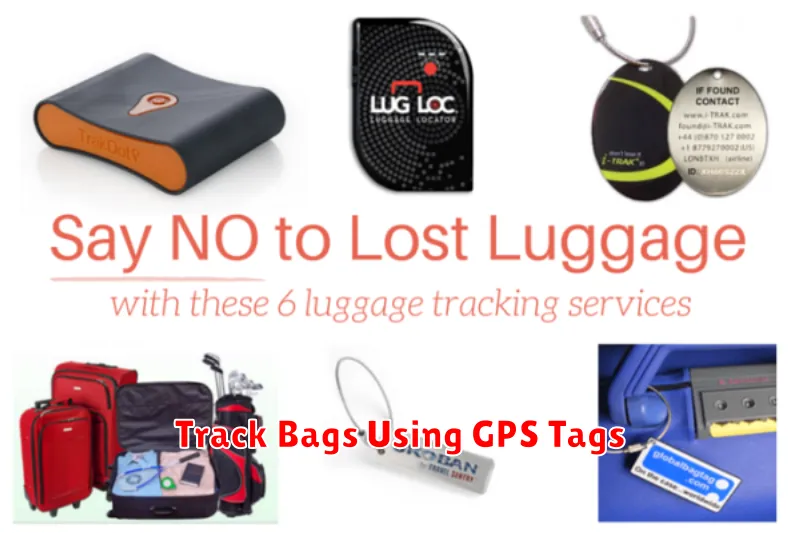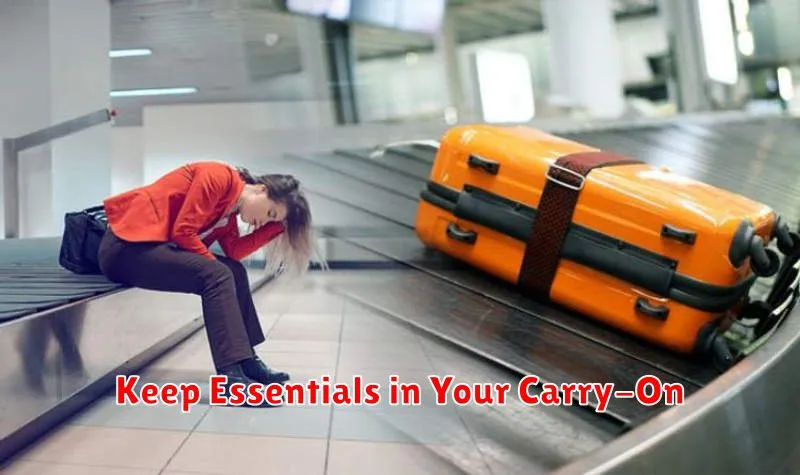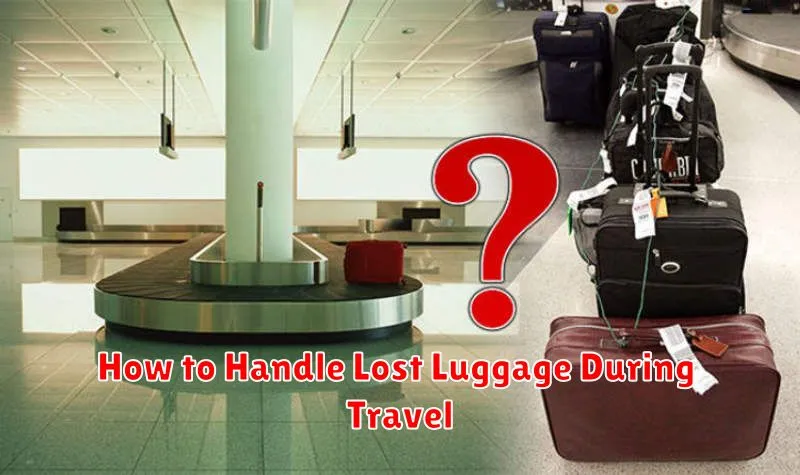Losing your luggage can be a stressful and disruptive experience during travel. Whether you’re on a business trip, a long-awaited vacation, or a short weekend getaway, arriving at your destination only to find your luggage missing can quickly derail your plans. This article provides comprehensive guidance on how to handle lost luggage effectively, covering everything from the immediate steps you should take at the airport to navigating the claims process and understanding your rights as a passenger. Learn how to prevent lost luggage in the first place and what to do if your bag is delayed or damaged.
From understanding the role of baggage tags and airline policies to mastering the art of packing strategically, this guide offers practical tips and essential advice to help you recover your lost luggage as quickly as possible. We’ll cover the importance of filing a Property Irregularity Report (PIR), communicating effectively with airline representatives, and utilizing online tracking tools. Don’t let lost luggage ruin your travel experience. Be prepared and informed with the information you need to navigate this unfortunate situation and ensure a smooth and enjoyable journey.
File a Report Immediately at Baggage Claim
If your luggage doesn’t appear on the baggage carousel, don’t panic. The first and most critical step is to locate the airline’s baggage service office or counter, typically situated near the baggage claim area.
Time is of the essence. Report your missing luggage immediately. Delayed reporting can complicate the tracing process and potentially impact any compensation you might be entitled to.
You will need to provide your baggage claim tags (usually attached to your boarding pass) and a detailed description of your missing bag(s). Be specific about the size, color, brand, and any distinguishing features that will aid in identification.
The airline representative will create a Property Irregularity Report (PIR). This document officially registers your lost luggage with the airline and is essential for tracking and follow-up. Make sure to get a copy of this report, including the file reference number, for your records.
Remain calm and polite throughout the process. While losing luggage is frustrating, airline staff are generally there to assist. Provide clear and concise information to facilitate the search for your belongings.
Know What Your Travel Insurance Covers
Before embarking on a trip, it is crucial to understand the specifics of your travel insurance policy regarding lost luggage. Policies vary significantly in coverage amounts and what qualifies as a covered loss.
Most policies cover lost, stolen, or damaged luggage during transit. However, the extent of coverage depends on the specific policy. Some policies offer a fixed amount per item, while others offer a maximum coverage amount for all your luggage combined. It’s essential to check the fine print to determine these limitations.
Also, be aware of what constitutes a covered loss. Typically, airlines are responsible for luggage lost during transit. Your travel insurance may cover losses due to other circumstances like theft from your hotel room, but specific conditions may apply. Read your policy documentation carefully to avoid any surprises should you need to file a claim.
Pay close attention to exclusions. Some items, such as high-value jewelry or electronics, may require additional coverage or may be excluded altogether. It’s also important to understand the claims process, including required documentation like baggage claim tickets and proof of purchase for lost items. Being prepared will streamline the process if you encounter this unfortunate travel disruption.
Track Bags Using GPS Tags

One of the most effective methods for locating lost luggage involves utilizing GPS tags. These small, battery-powered devices can be placed inside your luggage, allowing you to track its location in real-time via a smartphone app or web interface.
GPS tags offer a proactive approach to luggage management, giving you peace of mind knowing where your bags are at all times. Should your luggage be misplaced or delayed, you can pinpoint its location and potentially expedite its retrieval.
Several factors should be considered when choosing a GPS tag. Battery life is crucial, especially for longer trips. Look for tags with user-replaceable batteries or long-lasting rechargeable options. Size and durability are also important. The tag should be compact and robust enough to withstand the rigors of travel. Finally, consider the subscription costs associated with some GPS tracking services.
Keep Essentials in Your Carry-On

One of the most effective ways to mitigate the impact of lost luggage is to pack essential items in your carry-on bag. This ensures you have immediate access to necessities, even if your checked luggage is delayed or misplaced.
Consider packing a change of clothes, including underwear and socks. This will allow you to freshen up and feel more comfortable while waiting for your luggage to arrive. Toiletries, such as a toothbrush, toothpaste, and deodorant, are also crucial for maintaining personal hygiene.
Medications, especially prescription drugs, should always be carried in your carry-on. Losing access to essential medications can have serious consequences, so keeping them close is paramount. Additionally, any valuable items, such as jewelry, electronics, or important documents, should also be kept with you.
By strategically packing your carry-on with these essential items, you can significantly reduce the inconvenience and stress associated with lost luggage. This proactive approach will allow you to navigate the situation more effectively and continue your trip with greater peace of mind.
Get a Written Report for Claims
After reporting your lost luggage to the airline representative, the next crucial step is to obtain a written report. This report, often called a Property Irregularity Report (PIR), serves as official documentation of your lost luggage and is essential for filing a claim.
Ensure the report includes vital information such as your flight details, bag tag numbers, a description of your luggage (including brand, color, and size), and your contact information. Carefully review the report for accuracy before signing it. Keep a copy of this report for your records.
The PIR is your primary evidence when filing a claim with the airline for reimbursement for lost items. It provides a detailed record of the incident and supports your claim for compensation. Without this document, pursuing a claim can become significantly more challenging.
Reimbursement Tips for Essentials
Lost luggage can disrupt travel plans and necessitate purchasing essential items. Fortunately, most airlines offer reimbursement for these necessary expenses. It is crucial to keep all receipts for any purchases made while your luggage is delayed.
Contact the airline’s baggage claim department immediately upon realizing your luggage is missing. They will provide you with the necessary forms and instructions for submitting a reimbursement claim. Airlines typically have a specific timeframe for filing these claims, so prompt action is essential.
Reasonable expenses are typically covered, including toiletries, a change of clothes, and other necessary items. Luxury items or non-essential purchases are usually not eligible for reimbursement. Keep your receipts organized and submit them along with the completed claim form to the airline. Be sure to check the airline’s specific policy regarding reimbursement limits and procedures.
While waiting for your luggage to be located, consider purchasing essential items from less expensive stores to keep costs down. Be prepared to provide a detailed explanation of why each purchase was necessary. Keeping a copy of all documentation related to the lost luggage and reimbursement process is strongly recommended.
Follow Up Persistently Until Resolved
Losing your luggage can be incredibly frustrating, but consistent follow-up is key to its recovery. After filing your initial claim, don’t simply wait passively. Proactively contact the airline.
Maintain a regular follow-up schedule, perhaps every two to three days initially. Keep records of every interaction, including names, dates, and reference numbers. This documentation will be invaluable if your luggage remains unlocated for an extended period.
Don’t hesitate to escalate the issue if you’re not receiving adequate assistance. Request to speak with a supervisor or manager. Clearly and calmly reiterate the details of your situation and your need for a resolution. Persistence is often crucial in these situations.

